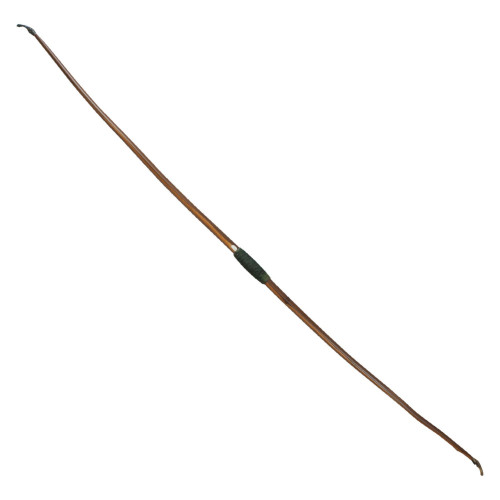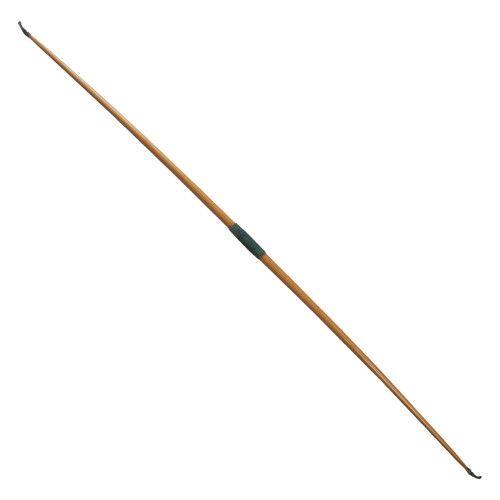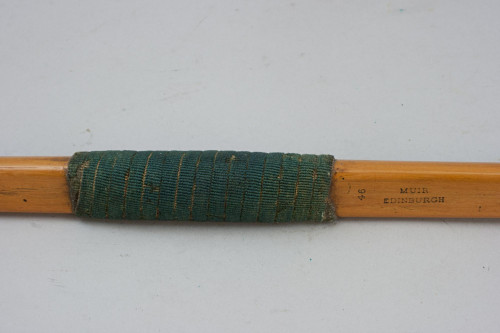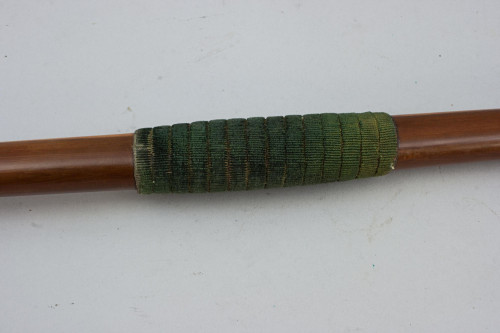- Home
- Artists & Makers
- Peter Muir
Peter Muir

1809 - 1885
Peter Muir: Master Bowyer of Scotland Peter Muir, the youngest of ten children, was born in February 1809 in Kilwinning, Ayrshire. His father, William Muir, was a carpenter and skilled bowyer, a trade that Peter would later carry to national renown. Archery was a favourite pastime among local youths, and for Peter, it was a daily activity. He quickly became a proficient archer, shaped by Kilwinning's long-standing tradition of Papingo shooting-also known as Popinjay archery-a unique form where archers shoot blunted arrows upward at a wooden bird-shaped target mounted atop a high pole or tower. The archer who successfully knocks down the target is declared the winner. Peter apprenticed under his father and also drew inspiration from his uncle, David Muir, himself a bowyer of notable talent. From them, Peter learned the craft that would earn him widespread respect and admiration. By the age of 18, in 1829, Muir had already made his mark as a bowyer of exceptional promise. That year, he was offered a position in Edinburgh by the Royal Company of Archers, the Queen's Bodyguard for Scotland. Their resident bowyer, John Brand, was seriously ill and in need of a successor. Muir accepted the position and quickly gained a reputation for excellence, one that soon spread well beyond Scotland. In addition to his bow-making prowess, Muir was also an accomplished archer. Years of practice at the butts in his youth paid off, and he became a formidable competitor at the Grand National Archery Meetings, participating regularly between 1844 and 1878. He claimed
Peter Muir: Master Bowyer of Scotland Peter Muir, the youngest of ten children, was born in February 1809 in Kilwinning, Ayrshire. His father, William Muir, was a carpenter and skilled bowyer, a trade that Peter would later carry to national renown. Archery was a favourite pastime among local youths, and for Peter, it was a daily activity. He quickly became a proficient archer, shaped by Kilwinning's long-standing tradition of Papingo shooting-also known as Popinjay archery-a unique form where archers shoot blunted arrows upward at a wooden bird-shaped target mounted atop a high pole or tower. The archer who successfully knocks down the target is declared the winner. Peter apprenticed under his father and also drew inspiration from his uncle, David Muir, himself a bowyer of notable talent. From them, Peter learned the craft that would earn him widespread respect and admiration. By the age of 18, in 1829, Muir had already made his mark as a bowyer of exceptional promise. That year, he was offered a position in Edinburgh by the Royal Company of Archers, the Queen's Bodyguard for Scotland. Their resident bowyer, John Brand, was seriously ill and in need of a successor. Muir accepted the position and quickly gained a reputation for excellence, one that soon spread well beyond Scotland. In addition to his bow-making prowess, Muir was also an accomplished archer. Years of practice at the butts in his youth paid off, and he became a formidable competitor at the Grand National Archery Meetings, participating regularly between 1844 and 1878. He claimed
championship medals in 1845, 1847, and 1863. While Muir was best known for his fine bows, his arrows were also highly regarded. They were instantly recognizable by their red and gold cresting and dark blue shaftments. Though associated with Muir, the arrows were actually crafted by Dick Thompson, a fletcher from the famed Thompson family of Meriden, hereditary bow-makers to the Woodmen of Arden. Thompson served as Muir's fletcher for an impressive sixty years. Peter Muir retired in 1885, leaving behind a legacy of craftsmanship and tradition. His two principal assistants, William Fergie the Elder and Andrew Gordon, carried forward the high standards he had set.
2 ITEMS
Please create wishlist to add this item to




